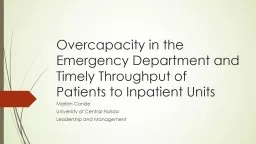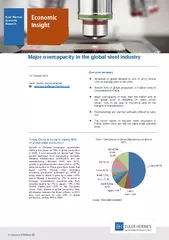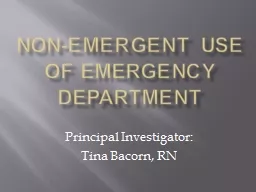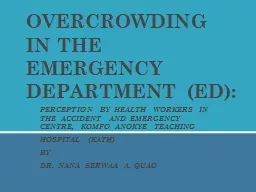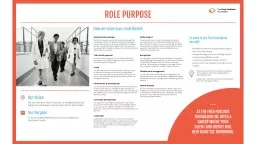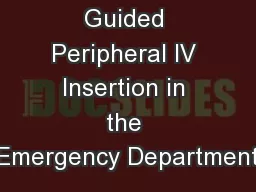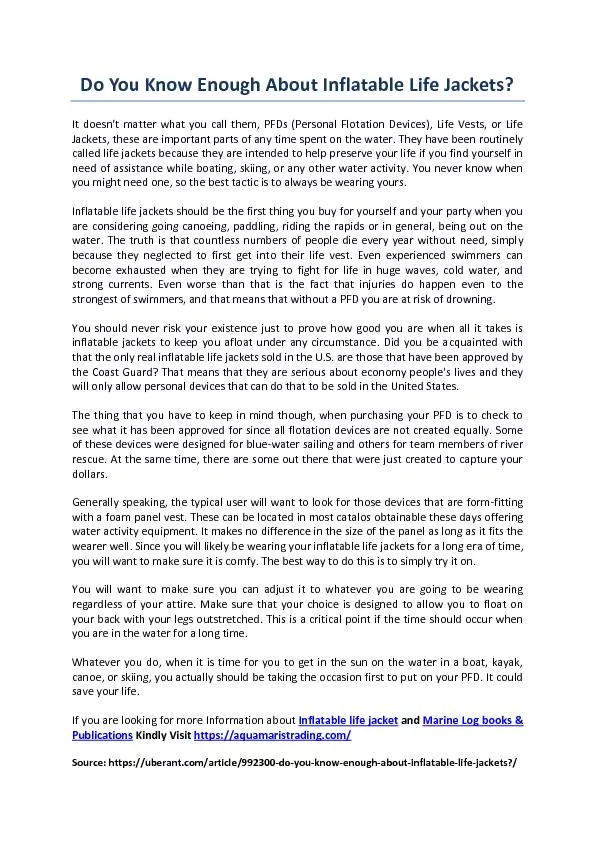PPT-Overcapacity in the Emergency Department and Timely Through
Author : min-jolicoeur | Published Date : 2016-06-11
Marian Conde University of Central Florida Leadership and Management Scope History Demand for Emergency Department services exceeds the available supply Inability
Presentation Embed Code
Download Presentation
Download Presentation The PPT/PDF document "Overcapacity in the Emergency Department..." is the property of its rightful owner. Permission is granted to download and print the materials on this website for personal, non-commercial use only, and to display it on your personal computer provided you do not modify the materials and that you retain all copyright notices contained in the materials. By downloading content from our website, you accept the terms of this agreement.
Overcapacity in the Emergency Department and Timely Through: Transcript
Download Rules Of Document
"Overcapacity in the Emergency Department and Timely Through"The content belongs to its owner. You may download and print it for personal use, without modification, and keep all copyright notices. By downloading, you agree to these terms.
Related Documents

